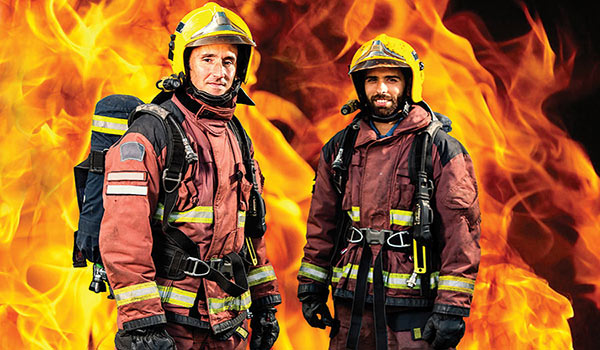Whether you’re a power company employee looking for a flame resistant jacket or a welder looking for FR shirts for men, it’s important to understand why buying flame resistant clothing is so critical. You can’t just assume the clothes you buy will protect you in case of fire, and you want to make sure the flame resistant clothing you do purchase is the best you can find. In fact, you learn everything you can about flame resistant clothing before you go shopping so that you know what you’re looking for.
What is Flame Retardant Clothing?
Fire retardant is not the same as fireproof, but if you work in a dangerous industry, flame resistant clothing could be the difference between severe and mild burns. Normal clothing, without fire protection, will ignite in a fire and continue to burn. Some fabrics may even melt to the skin. This isn’t a pretty picture, but it’s vital that you understand what can happen if you choose not to buy fire resistant clothing.
Fire retardant clothing is specially designed to resist ignition during a fire, an explosion, or even high temperatures. In the rare instances that the clothing does catch on fire, it will not continue to burn once the heat source is removed. As such, someone who is wearing flame resistant clothing has longer to escape a fire than if they were wearing regular fabrics. Moreover, if they are caught in the fire and their fire resistant clothes ignite, they can minimize their injuries by getting away from the source and immediately putting out the flames.
Flame Resistant Clothing Ratings
Fire retardant clothes are given protection ratings according to the Arc Thermal Protective Value (ATPV). The ratings, which are expressed in numbers, indicate how flame retardant the article of clothing is and allow the wearer to determine the type of task for which the clothing is suitable. For example, there are four hazard/risk categories (HRC), with HRC 1 being the least dangerous and HRC 4 being the most dangerous. The lower the number, the less protection the garment provides. If a shirt has a rating of between four and seven, it will only protect tasks listed under HRC 1. A rating of 40 or higher designates the garment as protecting tasks in HRC 4.
Additionally, there are layer requirements for flame resistant clothing that meet the HRC levels. Only one layer of personal protective equipment (PPE) is required to meet the guidelines for HRC 1, but three or four layers of personal protective equipment (PPE) is required to meet the guidelines for HRC 4. The ATPV rating will be displayed on any clothing that is advertised as flame resistant, and clothing that does not have this rating on its tags is not guaranteed to be flame resistant to any specific level.
Layers of Protection
In addition to the number of layers of fabric required to meet the higher HRC levels, it is also recommended that professionals in jobs where there is a high risk of fire or explosion wear several layers of highly-rated fire resistant clothing. The more layers you put between your skin and the flames, the better the odds are that you won’t be severely injured in a fire. You probably already take fire precautions in your home. Do it at your job as well.
Conclusion
If you’ve been advised to purchase fire resistant clothing for your job, don’t brush off this advice. Protect yourself and buy the properly rated flame resistant shirts, pants, overalls, and jackets for your needs.
Follow – https://bizztrends.com for More Updates



